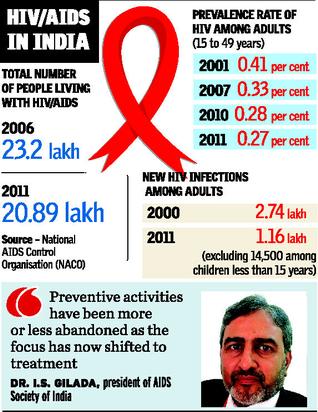MYSORE, October 12: Even as the number of people living with HIV/AIDS in the country has come down over the last ten to twelve years, president of AIDS Society of India I.S. Gilada fears a fresh spurt in the epidemic if the laxity in preventive intervention is allowed to continue.
Till a few years ago, voluntary organisations and government agencies carried out preventive strategies in high-risk groups including truck drivers, sex workers and migrant workers.
“But, these preventive activities have been more or less abandoned as the focus has now shifted to treatment,” said Dr. Gilada, speaking to The Hindu on the sidelines of a two-day HIV/AIDS Conference, which concluded in Mysore on Sunday.
If the complacency and laxity in preventive measures continues, there may a fresh spurt in HIV cases in the next four or five years, he warned.
Risk mapping
Calling for scaling up of preventive strategies, including risk mapping in vulnerable areas like student centres, railway stations, tourist centres, marketplaces and pilgrim centres, Dr. Gilada also made out a case for introducing ‘health education’ in school curriculum to create awareness about the virus.
Though India has the third highest number of estimated people living with HIV in the world, Dr. Gilada said the spread of the disease in the country was not on as massive scale as had been feared in the early days when the virus was detected. “There was a flaw in the way it was analysed back then by comparing it with African countries like Nigeria, Botswana and Swaziland,” he said.
He mentioned that sex was taboo in India and the society was against promiscuity. He said the affliction in India had been stabilised due to treatment strategies including free Anti Retroviral Therapy (ART) introduced since 2004. About 6.8 lakh patients are benefiting from the government ART programme, he said.
Numbers come down
Meanwhile, according to statistics provided by the National AIDS Control Organsiation (NACO), new HIV infections per year has come down by a massive 57 per cent from 2000 (2.74 lakh) to 2011 (1.16 lakh), while HIV prevalence among adults reduced from 0.41 per cent in 2001 to 0.27 in 2011.



